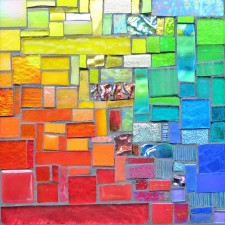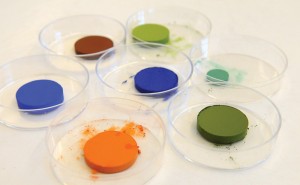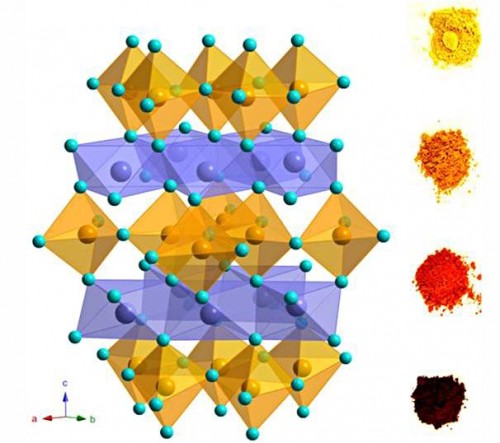In 2009, Dr. Mas Subramanian at Oregon State University was exploring the electronic properties of manganese oxides, and after heating a sample to 2,000 degrees Fahrenheit, it turned an intense blue. The pigment is stable and lightfast. During my brief experience with watercolor, I read warnings about colors that fade quickly, called fugitive colors, as if they flee the painting. Leave posters on a bulletin board in the sun long enough, and some will become pale echoes. Once I took overlapping posters down, and the part hidden underneath was preserved, and a surprise, because I didn’t notice it happening slowly.
The unusual “trigonal bipyramidal” crystalline structure seen here is being used by researchers at Oregon State University to create a range of new pigments with properties of safety and stability that should have important applications in the paint and pigment industries. (Graphic courtesy of Oregon State University)
By 2011, the OSU lab had found ways to make other colors, including orange, enhanced by adding iron. I look at the blue and the orange, and on the surface I don’t see their kinship, but underneath they are crystalline siblings. Chemistry discovers the soul of the material world, and an object lesson in small changes making transformative differences like blue into orange.
More Orange Goodness on my Orange Tuesdays Pinterest Board.



Go chemistry!
That’s so interesting! Oil paints also have certain colors that fade, especially in head and sunlight, so I try to keep my paintings out of it.